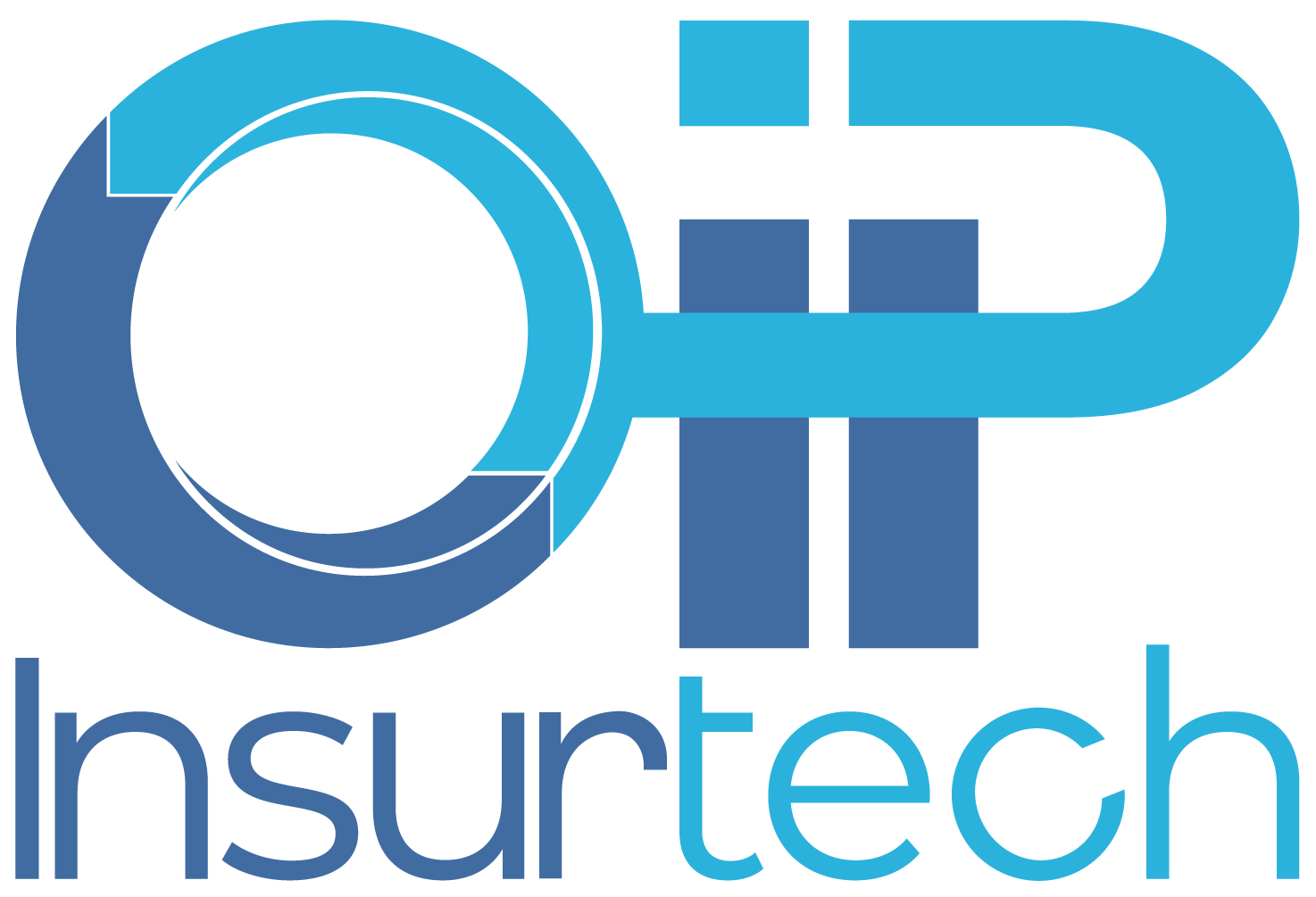A Comprehensive Look at the Impact of Intelligent Document Processing on Insurance Operations
What’s stopping insurers from keeping pace with modern technology? At a time when every large industry has gone digital, why is a large part of insurance still heavily reliant on paper-based processes and archaic systems?
Today’s insurance industry is at the threshold of revolutionary change. While many sectors have rapidly embraced digital transformation, all the way from retail to banking, insurers often find themselves lagging behind on multiple fronts. Over time, this has become a glaring gap with real-world repercussions for businesses all across the industry. Fortunately, the game-changing solution that’s been just around the corner is now here – Intelligent Document Processing (IDP).
IDP stands among a broader set of automation and data-driven strategies, such as AI-boosted underwriting and real-time analytics, that promise to ignite the next wave of innovation across the insurance landscape. Insurers who adopt these tools can deliver faster, more accurate services, and thrive in an increasingly competitive environment.
To that end, extracting data alone only scratches the very surface. Transforming insurance operations demands that every piece of information be validated, enriched, and systematically embedded into workflows for underwriting, compliance, and claims. Insurers moving beyond basic digitization stand to unlock a previously unattainable level of operational efficiency.
At the same time, bridging the gap between outdated systems and modern, AI-enabled processes remains a challenge.
Fragmented technology stacks, varied regulatory requirements, and the industry’s inherent caution toward major change can stall even the most promising initiatives. And that’s exactly the threshold. With the right alignment of people, processes, and technology, insurers can capitalize on the benefits of advanced document processing while laying a foundation for unprecedented growth.
1. The Digital Dilemma: Why Insurance Lags Behind
1.1 Traditional Systems and Reluctance to Change
The insurance sector has historically depended on time-tested, paper-intensive processes. Stacks of policy documents, property schedules, claims forms, and regulatory filings often require a manual approach. As a result, each new claim or policy can become an operational challenge, slowed down by processes that haven’t changed in decades.
That said, in an age where online banking, e-signatures, and digital health records are the norm, insurers’ reliance on these older methods shows a clear disconnect from progressive initiatives. It’s not that industry leaders lack the will to innovate – they’re held back by regulatory scrutiny, legacy IT systems, and a cautious corporate culture that strays from modernization. Change, however, is becoming less of an option and more of a necessity.
1.2 Shifting Customer Demands
Beyond technology, it’s the human factor that presses for large-scale digitization, as customers increasingly demand seamless digital interactions. According to PwC, over 80% of insureds would consider switching carriers if a user-friendly digital interface is not provided, adding mounting pressure for carriers, brokers, and MGAs to act. Gone are the days when a customer would dutifully fill out piles of paperwork in an agency’s waiting room: today’s policyholders expect convenience and speed.
1.3 The Looming Consequences of Inertia
The cost of inaction becomes higher by the month, leading to the question of just how long insurers can stay in their old ways.
Persisting with outdated workflows leads to slower turnaround times, higher overheads, and more frequent errors. When a single paperwork mishap can result in a coverage dispute or a regulatory penalty, traditional methods can create a significant risk instead of a mere inconvenience. On top of that, the market is more competitive than ever.
By 2030 AI’s impact on insurance processing is projected to increase productivity and cut operational costs by up to 40%, according to Precedence Research.
In practical terms, insurers that embrace these technologies can deliver immediate quotes, faster claims approvals, and improved underwriting accuracy. Meanwhile, those that delay risk falling behind, missing new revenue opportunities, and alienating customers who have come to expect modern efficiency.

2. Intelligent Document Processing 101
2.1 What Is IDP?
At its core, Intelligent Document Processing is a technology that automates data extraction, interpretation, and classification from various sources: paper documents, digital PDFs, scanned images, and even emails or forms.
The very essence of IDP solutions in the insurance context is their ability to handle an incredible volume and variety of paperwork: property schedules, invoices, billing statements, coverage applications, medical records, and much more.
When integrated correctly, IDP accelerates time-intensive tasks such as classification, data entry, and error-checking. It relies on advanced algorithms to capture and organize information, allowing insurers to drastically reduce time lost on repetitive manual labor. The advantage benefits everyone in the insurance chain, from carriers who can release quotes more rapidly, to MGAs who can handle a larger book of business without the need to overburden their staff.
2.2 IDP’s Role in Today’s Insurance Ecosystem
The lifeblood of modern insurance operations is data – lots of it. Whether you’re dealing with property and casualty lines or specialized products like cyber insurance, underwriting decisions increasingly rely on real-time analytics, external data sets (like weather patterns or credit scores), and the rapid integration of policy details.
Automation saves the day by significantly reducing overhead by cutting down manual data manipulation. According to Parseur, organizations can see up to 200% return on investment in IDP within the first year.
Beyond the financial benefits, it also paves the way for more agile responsiveness. Underwriters no longer have to wait days for data entry tasks to be completed – in many cases, accurate data is available within hours, or even minutes of receiving a submission.
2.3 Why Merely Digitizing Isn’t Enough
Some insurers assume that going paperless is the same as transformation, but simply converting documents to a digital format only scratches the very surface. Digitized files still require human review and data extraction, which is endangered by many of the paper-based model’s inefficiencies.
By contrast, IDP doesn’t just scan and store documents – it understands them. AI and machine learning models parse the contents, identify critical data points, check for accuracy, and enrich the information with external data sources (like property records or financial databases). The end result is a system that feeds relevant, validated data directly into underwriting, compliance, and claims workflows.
3. The Game-Changing Advantages of AI-Powered Data Extraction
3.1 Fast, Accurate Input
Manual data entry comes with the risk of bottlenecking an otherwise very efficient enterprise. A mid-sized carrier might spend days sifting through property schedule spreadsheets and coverage details before finalizing quotes. But with IDP, those same tasks can be trimmed to a matter of hours or even minutes.
Automated data extraction tools also reduce costly human errors. Considering the numerous policy endorsements and coverage nuances in a single commercial package policy, a single typo can create significant downstream issues, from mispriced risk to compliance headaches.
Modern IDP solutions spot missing endorsements and detect contradictory coverage clauses, alerting underwriters before these inconsistencies can turn into an operational nightmare.
3.2 Data Enrichment for Better Decision-Making
Basic IDP often focuses exclusively on scanning and digitizing documents with minimal validation. An insurer might scan dozens of application forms daily but never check if crucial fields are properly captured, letting errors and omissions go unnoticed.
In contrast, advanced solutions offer features like real-time data enrichment, comprehensive analytics, and automatic validation checks. Integrating relevant third-party services allows these platforms to transform raw data into actionable insights for underwriting, compliance, and claims processes.
For instance, if a scanned property schedule references a high-risk area, the platform can cross-verify the location with real-time weather data, credit bureau reports, or historical loss information, helping underwriters gauge potential exposures far more accurately.
Integration also enables the detection of anomalies in financial statements, addresses, or policy numbers. If discrepancies are found, like a single policy number across multiple documents or mismatches in property addresses, advanced IDP flags these irregularities on the spot. The outcome is a more comprehensive risk assessment that helps spot potential fraud or coverage gaps before the policy is bound.
3.3 Submission-Ready Data
A significant challenge in multi-carrier environments is aligning documents to each carrier’s specific submission or intake format. If the data isn’t structured correctly, underwriters spend a lot of time reformatting or verifying forms. Instead of simply dumping extracted data into spreadsheets, advanced IDP solutions automate this entire process by categorizing and labeling each data field based on the carrier’s unique requirements.
The knock-on effect is streamlined underwriting and claims filing, since submissions that arrive in the correct format up front require minimal back-and-forth between brokers and underwriters, resulting in fewer corrections and rejections, as well as faster policy issuance or claim settlement.

4. Why Manual Processes Continue to Undermine Insurers
4.1 Chasing Paper Trails
Even as the entire world digitizes, many insurers remain saddled with folders full of paper documents, manual spreadsheets, and emails that must be mined for critical data. Research by Storm shows that an average of 20+% of total staff productivity is lost in managing paper-based documentation, while more than 50% of work time is wasted on preparing or sifting through it.
Mountains of paper effectively cause an operational disaster:
- sales teams struggle to follow up on leads,
- policy issuance teams see major delays in processing new business, and
- claims departments risk losing track of crucial documents.
In essence, virtually each step of an insurer’s manual workflow is a point of potential error, redundancy, and delay. Exponentiate this over time, and you don’t need another reason why the industry is at an overall loss.
4.2 Data Quality: The Backbone of Insurance
As an insurance business grows in an operational scale, so does its chance of corrupting valid information. Coverage details often pass through multiple channels, like scanned PDFs, typed spreadsheets, or repeated manual entries in policy systems. With hundreds, or even thousands of documents edited on a daily basis, bad data goes from a risk to a certainty.
IDP with advanced validation cross-references data against established databases, from credit bureaus to property records, to deliver accuracy rates frequently surpassing 99%. (Hyperscience) While AI should never substitute human judgment in final underwriting decisions, its potential does drastically reduce the burden on staff, who then focus on tasks that truly require their expertise.
4.3 Scalability and Agility Roadblocks
Outdated infrastructure can erode an insurer’s ability to scale when opportunities arise or to rapidly process an influx of claims, particularly after catastrophic events like storms or wildfires.
Insurers sometimes devote entire teams to data entry just to keep up during peak periods, solving what’s essentially a processing efficiency issue with drastic manpower displacement. Meanwhile, a backlog of unprocessed paper documents can derail timely payouts or policy renewals.
Cloud-based IDP solutions can scale capacity as needed during high-volume periods.
4.4 Compliance Constraints
Insurers faced nearly 42,000 fines in 2020 alone, suffering over 1,275 license suspensions and 1,468 revocations, as reported by Insurance News Net. Aside from being proper practice, maintaining comprehensive, consistent, and accurate documentation across all policies and claims is a legal responsibility. From inexpensive fines to career enders, the consequences of failing to meet these standards vary in severity, but can all equally be avoided.
Intelligent document processing solutions offer automated checks and a tamper-proof audit trail, automatically verifying coverage details, tracking changes, and flagging anomalies or omissions in seconds. Be it a new endorsement, claims adjustment, or underwriting note, all updates are instantly logged to build a clear, time-stamped record for regulatory review.
4.5 Delayed Decision-Making
When the underwriting team is forced to spend hours tracking down coverage endorsements or waiting on manual data tallies, critical market opportunities tend to slip away. Renewals might be missed, quotes may get delayed, and brokers can grow frustrated by slow response times. According to Data Semantics, IDP has the potential to yield a 70% improvement in overall document processing speed and an 85% boost in document verification times.
These gains quickly add up in daily operations, delivering significant efficiency across the board. Underwriters can finalize quotes quickly, claims adjusters can make more accurate assessments, and senior management can glean actionable insights from real-time analytics. It’s only after cutting out these bottlenecks that insurers get the breathing room to stay competitive.
5. Supercharging Underwriting with Predictive Analytics
5.1 Unlocking the Full Potential of AI
Predictive analytics and machine learning are slowly becoming the cornerstone of modern underwriting by enabling more dynamic risk assessment and smarter decision-making. The most advanced AI-powered models can leverage geospatial data, historical loss patterns, and emerging trends to perceive risks such as flood frequency, severe weather events, and even potential claims fraud.
However, the effectiveness of these predictions depends on the accuracy and timeliness of the data being analyzed.
Intelligent document processing ensures underwriters have access to the most up-to-date information, automatically aggregated and enriched within their systems. IDP and predictive analytics are poised to be two sides of the same insurance process optimization coin in 2025.
5.2 Freeing Teams for High-Value Work
Modern underwriting teams often struggle with new forms of risk, including cyber threats and intangible assets, needing quick analysis from a variety of data sources. Tackling these challenges through AI-driven workflows automatically aggregates these disparate inputs into a richer, more precise view of evolving exposures.
Once freed from shallow mental labor, underwriters can pursue specialized areas like parametric coverage, usage-based policies, climate-driven offerings, and all other segments whose innovation demands critical thinking.
Fully organized information also enhances collaboration with data scientists and product managers, boosting the organization’s capacity to adapt quickly and create breakthrough insurance solutions.

6. Preparing for the Future: How to Become a Modern, Resilient Insurer
6.1 Why Some Insurers Hesitate
A 2024 Luxoft report shows that only 42% of insurers invest in AI-based solutions, with fewer still benefiting from IDP capabilities. While some leaders are yet to become familiar with InsurTech’s overwhelming impact, others remain cautious over legitimate concerns, including:
- Complex, outdated legacy systems
- High costs of digital transformation
- Fear of operational disruptions
- Strict regulatory requirements and compliance hurdles
Many existing IDP solutions address only singular pieces of the automation puzzle. This tends to be the most prominent deal-breaker, as adopting multiple specialized tools to handle each step in a workflow leads to unnecessary complexity and unsustainable integration costs. Crucially, most InsurTech vendors lack the deep industry knowledge needed to fully optimize an insurer’s day-to-day – a fundamental flaw that even the most sophisticated code can’t make up for.
Therefore, for IDP to truly revolutionize an insurer’s operations, it must:
- Provide End-to-End Automation: Eliminate inefficiencies and unnecessary manual tasks on an enterprise level.
- Offer Seamless Implementation: Integrate quickly and painlessly with legacy systems, regardless of the intricacies.
- Reflect Industry-Specific Expertise: Address the unique challenges of digitizing insurance operations.
- Remain Cost-Competitive: Deliver measurable ROI without crippling overheads.
6.2 OIP Insurtech’s NT Extractor: A Case in Point
Even in this early stage of the insurance sector’s full-scale tech adaptation, there are products that check all the required boxes, like OIP Insurtech’s NT Extractor. Instead of merely focusing on faster data entry, solutions like these lay the groundwork for a more comprehensive AI-driven strategy with the potential to achieve much more than simple mundane labor automation.
Concrete benefits of OIP Insurtech’s NT Extractor:
- Speed to Market: Submissions that once took three hours to process now require just four minutes.
- Data Accuracy: Error rates dropped from 4% to under 1%.
- Deep Insight: Policies that previously stored only around 30 core data points can now include over 120 points.
- Operational Resilience: Round-the-clock availability with over 99% uptime ensures minimal interruptions.
- Significant Cost Reduction: Up to 100% efficiency gains in submission processing, cutting operational costs by more than 50%.
6.3 Simplifying Adoption
Mass automation seems like a costly, complex change, but we invest heavily in enabling simple and easy deployment. In the words of Automation Anywhere, implementing IDP is 5-10x faster than all other business process optimization methods, and the quicker the technology goes live, the sooner it can pay for itself.
NT Extractor is deployed in three speedy stages:
- Design: We provide a dedicated integration team to evaluate your systems and define project objectives. Target data fields, turnaround times, and processes are mapped to ensure the solution meets specific business needs.
- Build: Our specialists create the implementation components tailored to your unique requirements, each of which is rigorously tested in its corresponding process environment.
- Deploy: Your staff is trained on working with NT Extractor in a series of live tests. NT Extractor gradually transitions into daily use, with all its performance metrics reported on in real time to refine the final rollout.
Charting the Path Forward
At its most brilliant, IDP is much more than just going paperless. If it had a slogan, it would be ‘Spend much less and gain much more, automatically’. And the best part is that we’re only at the beginning. The next decade is bound to bring a shift toward even more advanced AI-driven insurance solutions, like systems capable of orchestrating entire underwriting processes and proactively identifying cost-saving or risk-reducing measures.
Forward-thinking insurers who embrace these changes will find themselves at the forefront of the industry, operating at their true maximum, with the readiness to capitalize on the boundless promise of technological innovation.
Want to learn more? Send a message to our team and see how OIP Insurtech and NT Extractor can reshape your insurance operations.

